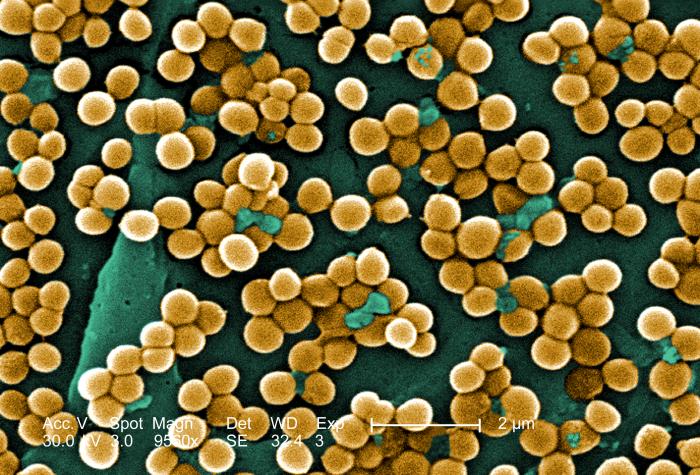A toxin produced by a common bacteria causes eczema-like rashes. That’s a new finding made by University of Michigan Medical School researchers and their colleagues.
In a paper published in Nature, the team reports that a toxin produced by the common bacteria Staphylococcus aureus – popularly known as “staph” – causes immune-system cells in the skin to react in a way that produces eczema-like rashes.
When the same skin was exposed to a modified strain of the same bacteria, no rashes occured. The only difference? The modified bacteria lacked the ability to release a molecule called “delta toxin”.
“We know that 90 percent of patients with atopic dermatitis, also called eczema, have staph bacteria detectable on their skin,” says University of Michigan professor Gabriel Nunez, M.D, who is the Paul de Kruif Professor of Academic Pathology. “But until now, it has not been suspected that the contribution was primary, because there was not a clear mechanistic link. Now we have evidence that there may indeed be a direct link.”
Strong link between bacteria and eczema
That could explain the reason why some people report a relief in eczema symptoms after taking antibiotics. However, it’s too soon to say for sure that staph bacteria causes eczema. Some people may be genetically vulnerable. Plus, the study was only done on mice so far, so whether it will have the same effect on people remains to be seen.
However, it’s not a good idea to reach for antibiotics every time you have a skin break out. Antibiotics have many drawbacks as long-term therapies for a chronic condition such as eczema – most of all, the threat of contributing to the already serious issue of multi-drug resistant Staphylococcus aureus, or MRSA.
The staph bacteria may produce delta toxin to kill other competing bacteria that reside on the skin – including benign and beneficial ones.
So, the toxin may have to do with that kind of “battle” between microscopic organisms fighting for a niche on the host body. “Perhaps the host – the human – gets involved in the middle of the war,” Nunez speculates.
Further research will be needed to find out.
Story: University of Michigan Health System
photo credit: Microbe World via photopin cc


